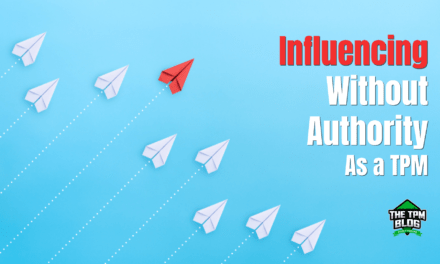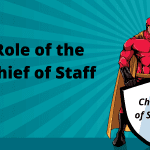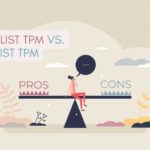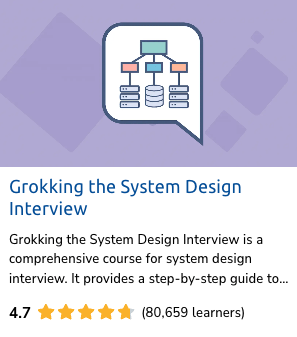Last updated on August 15th, 2024 at 12:05 pm
Writing is a critical skill for Technical Program Managers (TPMs) and similar roles as it underpins many key responsibilities, including program management, stakeholder communication, and leadership. Documents are powerful communication tools for conveying ideas, ensuring clarity, fostering collaboration, and record keeping. A well-written document helps structure complex thoughts and facilitates scalable communication. Effective writing distinguishes experienced TPMs from their junior counterparts.
Why TPMs Should Write Documents
TPMs own or contribute to strategy, roadmap, escalation, and decision documents, among other program management artifacts. They document pivotal decisions in a program concisely and support their perspectives with data. When an idea, proposal, or solution to a risk needs to be presented, it’s the TPM’s responsibility to ensure the creation of a document. Writing documents showcases effective communication and respect for the audience’s time and need for precise information. Using documents demonstrates thoroughness and attention to detail, which are key qualities for a TPM. A well-written document will:
Force organization of thought
Writing compels TPMs to articulate their thoughts clearly, facilitating peer review and raising essential questions. TPMs are expected to challenge beliefs, include well-rounded reasoning, and use the documentation exercise to foster understanding among differing perspectives, leading to consensus. Written documents convey complex ideas, processes, and data through detailed explanations, charts, diagrams, and references, enhancing understanding. Crafting a good document demands deep subject knowledge, ensuring TPMs fully grasp the topic and make informed decisions.
Foster collaboration and inclusivity
Unlike PowerPoint presentations or verbal talks, documents empower readers to review content at their own pace. Reading a document benefits neurodivergent individuals and non-native speakers, enhancing their ability to ask questions and provide feedback. Written communication ensures everyone, including geographically dispersed teams, is informed and can contribute ideas in a structured manner. Documents scale effortlessly, delivering consistent messaging across all levels of the organization.
Create a timeless artifact
Written documents remain accessible long after a product or program launches, offering insights into decisions and hypotheses. They provide a foundation for accountability and minimize misunderstandings and disputes.
How To Write Well As A TPM
Remember these key points when writing a document:
Create an outline
To ensure a logical flow, start with an outline, including headings, subheadings, and intro/conclusion paragraphs. Begin with the purpose, move to the background, and then summarize recommendations or next steps. The core purpose and takeaways should be evident from reading the document. Starting with a simple outline helps break the document into manageable pieces that can be delegated.
Provide clarity of thought
Begin your document by clearly stating its purpose and the core request or decision it aims to achieve. Anchor the document around the purpose. Remind the reader of the problem’s significance, customer impact, and the desired outcome. Clarify how this outcome benefits the organization and highlight the program milestones and deadlines. Conclude with a summary to recap the main points and reinforce key messages to ensure the reader retains the most critical information.
Write for your target audience
From the start, identify your intended audience and collaborators. Write with the reader in mind, providing sufficient context and avoiding acronyms or assumptions. Ensure the right level of detail, clarify why they should care, and specify the desired outcome. Detail how to achieve this outcome and the required resources, risks and priorities.
Collaborate with the team
Involve key team members in document creation. As a TPM, delegate sections while providing the outline and guiding the effort. This collaboration ensures all perspectives are captured and well represented to make an informed decision.
Be specific and concise
Precision is essential, as vague statements can lead to assumptions. Remove fillers and weasel words to ensure every word adds value. Avoid numerically vague terms like “should,” “basically”, “much better/worse”, “significant”, “faster/slower” or “generally.” Maintain grammatical accuracy to keep readers focused on your core idea. Peer and management reviews help clarify ideas and assumptions. Keep your sentences short to aid comprehension.
Leverage data
Use concrete numbers and precise metrics to back up your points. For example, instead of saying, “We improved performance,” specify, “We reduced server-side latency from 10ms to 1ms.” Illustrate your points with real-world examples and anecdotes that make the data relatable and easier to understand. Double-check your data for accuracy and reliability. Incorrect data can undermine the credibility of your document. Explain the context in which the data was collected, such as the time period, conditions, or any significant factors that influenced the data. Ensure all data included directly supports your document’s purpose and goals.
Embrace transparency
Never minimize or hide problems. If complexities or unknowns exist, address them directly in the document. Fully disclose risks and unresolved issues to prevent future chaos. Transparency is crucial for accurate understanding and successful problem-solving.
Iterate and refine
Review your document multiple times for clarity, coherence, and consistency. Eliminate grammatical errors and awkward phrasing. Ensure the document is well-formatted. Use a consistent font, appropriate margins, and adequate spacing. A clean, professional appearance enhances readability and credibility. Solicit feedback from peers to catch mistakes and improve overall effectiveness. Anticipate questions and include supplementary data in an appendix. While you can’t address every question in the main document, providing supporting data in an appendix keeps the main content concise and informative.
Do you want to elevate your writing skills?
Raise the bar with clear, impactful documents! Get expert feedback from ex-Amazon Sr. Mgr. Preetha.
Conclusion
Effective writing leads to better decision-making and enhances a TPM’s ability to manage projects, communicate with impact, and drive successful outcomes.
Recommended Reading
– On Writing Well: The Classic Guide to Writing Nonfiction
– Style: Lessons in Clarity and Grace
Author


















